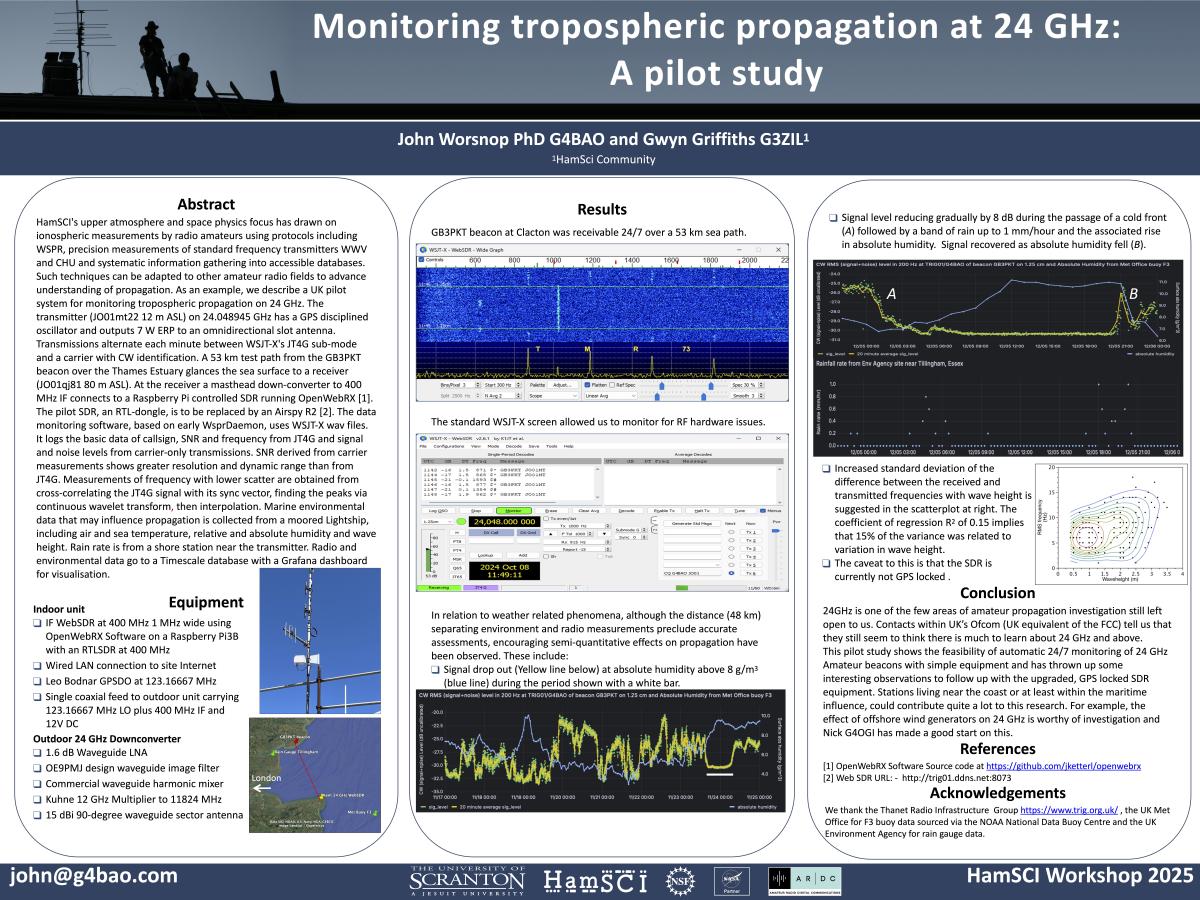| Title | Monitoring tropospheric propagation at 24 GHz: A pilot study |
| Publication Type | Conference Proceedings |
| Year of Conference | 2025 |
| Authors | Griffiths, G, Worsnop, J |
| Conference Name | HamSCI Workshop 2025 |
| Date Published | 03/2025 |
| Publisher | HamSCI |
| Conference Location | Newark, NJ |
| Abstract | HamSCI's upper atmosphere and space physics focus has drawn on ionospheric observations by hams using protocols including WSPR, and precision measurements of transmitters WWV and CHU with the information gathered into databases. Such techniques are applicable to other amateur radio fields to advance understanding of propagation. As an example, we describe a UK pilot system for monitoring tropospheric propagation at 24 GHz. The transmitter (JO01mt22 12 m ASL) on 24.048945 GHz has a GPS disciplined oscillator and outputs 7 W ERP to an omnidirectional antenna. Transmissions alternate each minute between WSJT-X's JT4G sub-mode and a carrier with CW identification. The 53 km test path over the Thames Estuary glances the sea surface to a receiver (JO01qj81 80 m ASL). At the receiver a masthead down-converter to 400 MHz IF connects to a Raspberry Pi controlled SDR running OpenWebRX. The pilot SDR, an RTL-dongle, is to be replaced by an Airspy R2. The data monitoring software, based on early WsprDaemon, processes WSJT-X wav files. It logs basic data of callsign, SNR and frequency from JT4G and signal and noise levels from carrier-only intervals. SNR derived from the carrier shows greater resolution and dynamic range than from JT4G. Measurements of frequency with lower scatter are obtained from cross-correlating the JT4G signal with its sync vector, finding the peaks via continuous wavelet transform then interpolation. Data on environment variables that may affect propagation is collected from a lightship, including air and sea temperature, relative and absolute humidity and wave height. Rain rate is from a shore station near the transmitter. Radio and environmental data go to a database with a Grafana dashboard for visualisation. Encouraging semi-quantitative effects of changes in the environment on propagation have been observed. These include: signal dropout at absolute humidity above 8 g/m3; increased variance of frequency with waveheights above 1 m; and signal level reducing gradually by 8 dB during the passage of a cold front with a band of rain up to 1 mm/hour. |
| Refereed Designation | Non-Refereed |
| Full Text |

